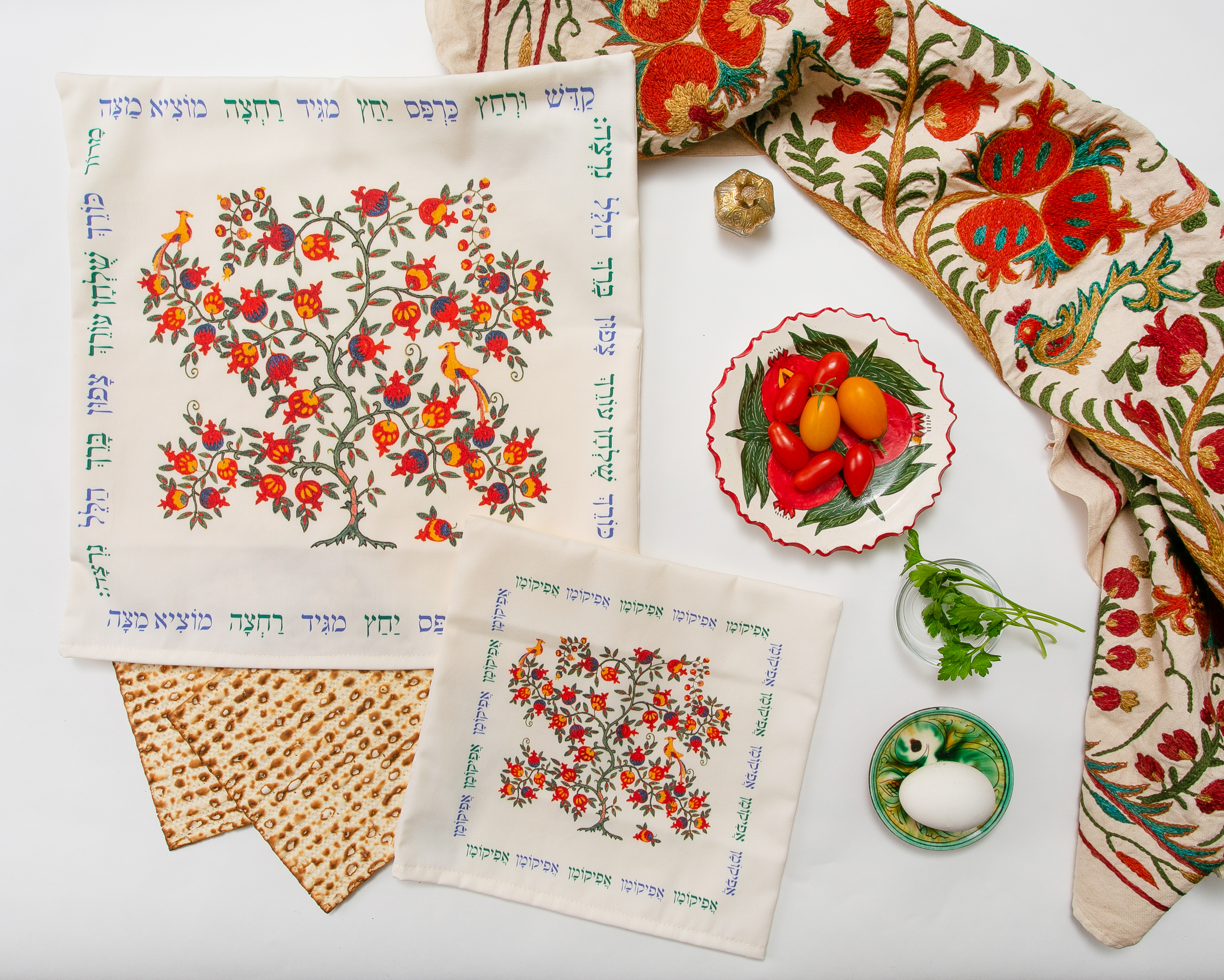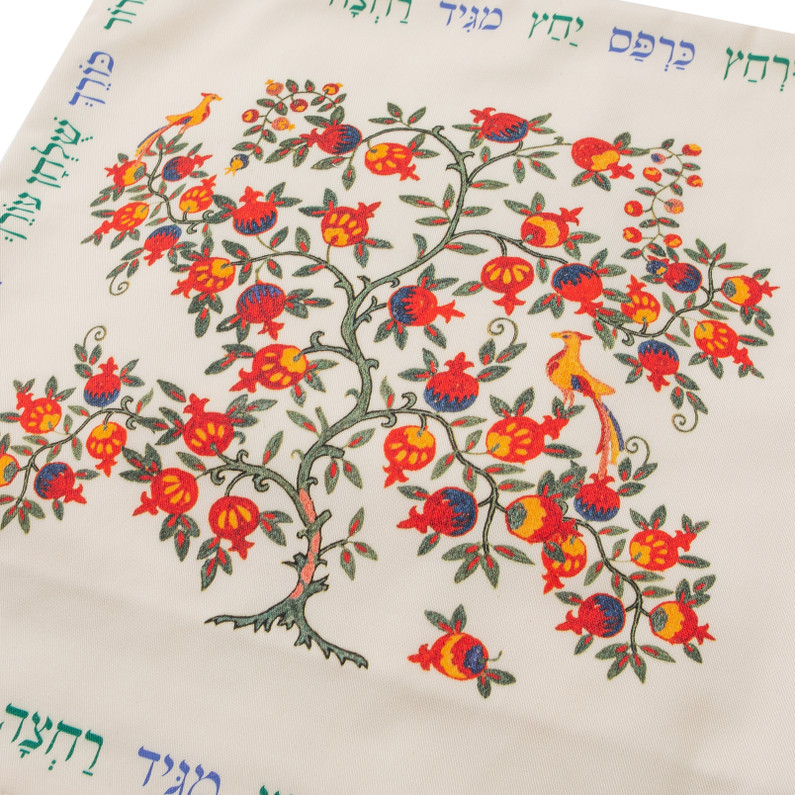PASSOVER INSPIRATION FROM BUKHARIAN UZBEKISTAN
Part of my mission in travelling is to gain inspiration for new designs. I enjoy going to countries with cultures very different to the European tradition that I grew up with. My mission is to in a small way transfer or repurpose designs to items that can be used on an everyday basis today.
I jumped at the idea of travelling to Uzbekistan which is such an exotic and visually rich and enchanting place. The Jewish link always has particular interest to me, and the Jews have such a long and varied history in Uzbekistan.
Legend has it that Jews first settled in Uzbekistan following the destruction of the First Temple. The first documented Jewish presence in the area dates to the 4th century C.E. while the large Jewish community in Samarkand is first documented in the 12th century. By the time Central Asia was annexed by Russia (1865-1873), the Bukharian Jews were a minority, Jews lived in the main cities of Bukhara, Samarkand, Tashkent, Karshi, and other cities.
 Of course
Uzbekistan was on the spice roads and caravans went through on their way to China. There were waves of Jewish
emigration from Iran to Uzbekistan as a result of the Mongolian conquests of
the 13th century, we see many surnames of the Jews of Uzbekistan have Persian
roots.
Of course
Uzbekistan was on the spice roads and caravans went through on their way to China. There were waves of Jewish
emigration from Iran to Uzbekistan as a result of the Mongolian conquests of
the 13th century, we see many surnames of the Jews of Uzbekistan have Persian
roots.
The wonderful aqua geometric tiles – one of the hallmarks of Uzbeki buildings of course is clearly inspired by the monumental Persian architecture.
My brother married in Iran in 1975 and after the wedding I travelled to wondrous Isfahan and around Iran, and the geometric designs in Uzbekistani reminded me of Iran.
Beyond the remarkable architecture I was enthralled with the vivid colors and designs of the textiles and pottery. Themes and motives we are all familiar with for example -pomegranates, and other fruits are rendered in fresh, new delicious ways.
According to the Soviet census, there were 103,000 Jews in Uzbekistan in 1970. But between 1989 and 2002, over ninety percent of Uzbekistan's Jewish population left for Israel and the US.
I visited Jewish homes of the Bukharian Jews, who no longer live there and was enchanted by the designs on the walls and the iconic Jewish motifs.
I also loved the

Suzanis which are embroidered decorative textiles made in this area. The Suzanis were traditionally made by Central Asian brides as part of their dowry. They inspired my Runners and Challah and Matza covers.

I worked with artist Jen Klor from Jerusalem to bring to life a glorious design from a suzana found in a Jewish home. We were also inspired by a wall painting.
Our new handmade Matza and Afikoman cover, will be a magnificent Passover center piece and will surely generate generous reactions from loved ones. The Matzah cover has the words of the order of the Seder as a frame, and Afikoman cover has the words Afikoman in Hebrew as a frame, with pomegranate tree in its center.
Bukharian Jews have particular Passover traditions which include wearing, a colorful Bukharian kaftan or Jomah (robe) with gold embroidery. Both men and women dress in this as it represents being royal and free.
On the Seder plate Bukharian Jews place a lambs foot. Instead of horseradish, romaine lettuce is used, a special charoset, is made on the basis of raisins walnuts and apple. A special Haggadah is used with Bukharian (Judeo-Tajik or Judeo-Persian) songs written in Hebrew letters.
At the Seders participants pretend to be Jewish slaves who have just escaped from Egypt. Before the afikomen found, an older person “whips” everyone with a towel so they feel a little bit of the pain that the Israelites felt as slaves.
Recent Posts
-
Pomegranates the queen of fruits with the regal crown
The pomegranate is a fruit-bearing deciduous shrub or small tree native to the region of the Middle …11th Sep 2023 -
Honey ! Why only Apples and Honey? New |Year foods and Gifts
Rosh Hashanah, the Jewish New Year, represents a time for hope and renewal. During the Rosh Hashanah …11th Sep 2023 -
Eight Original Gift Ideas, for the eight days of Hanukkah.
Eight Original Gift Ideas, for the eight days of Hanukkah.While the trend for gifts ideas for Hanu …17th Nov 2022


